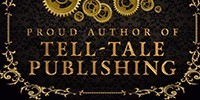Recently I had the pleasure of re-reading Mark Z Danielewski’s House of Leaves, and it’s every bit a treat as when I first read it some years ago. It’s a masterstroke of decompressed storytelling, thought provoking analysis, and pervasive psychology.
To begin talking about House of Leaves, one must first set the table. There is a man called Will Navidson, he recently purchased a new house and has decided to film the process of settling in with his family at their new home, and when things take a turn for the weird, he keeps recording. His footage became the basis for a film called The Navidson Record, an extremely controversial and ground-breaking piece of cinema that led to a great many attempts at analysing it.
There is an old man named Zampanò, he was attempting to put together a deconstructive essay regarding the Navidson Record when he died in his apartment. Zampanò relied on quite a few specialists and stenographers to work on his magnum opus.
There is a man named Johnny Truant, who was living a listless life of menial work and late night parties when he discovered Zampanò’s work, splayed about the dead man’s apartment in unsorted pages, who decided to assemble these loose leaves into a proper book, while adding some commentary of his own.
The book jumps up and down these levels, you might see a scene from the Navidson Record, the opinion of professional critics regarding that scene, what Zampanò thinks about their critique and what he thinks they missed, and then Johnny trying to make sense of it while drifting off into tangents about his own life and excerpts from his own journal, and even an occasional editor comment on Johnny’s comments. Often it is less straightforward than that.
House of Leaves in an extremely in-depth look at the idea of labyrinths in human culture, relating it to an enormous breadth of conversation regarding addiction, direction, mythology, fear of the dark, fear of being discovered, fear of parenthood, fear of adulthood, fear itself and far too many topics to just list here.
The typographic techniques are also remarkable. To just say House of Leaves makes good use of color and page layout doesn’t do it justice. A page can be a maze, with blocks of ‘clutter’ text trying to lure you away from the path the prose goes down, or a page can be a peephole where you can just barely see six words in front of you, or a page can be a tunnel, showing paragraphs you’ve already passed and paragraphs to come. Footnotes can span for several pages and usurp the role of prose entirely, then vanish with the turn of a page.
It’s gripping, witty, insightful, and a profoundly unique experience I can’t recommend enough.
